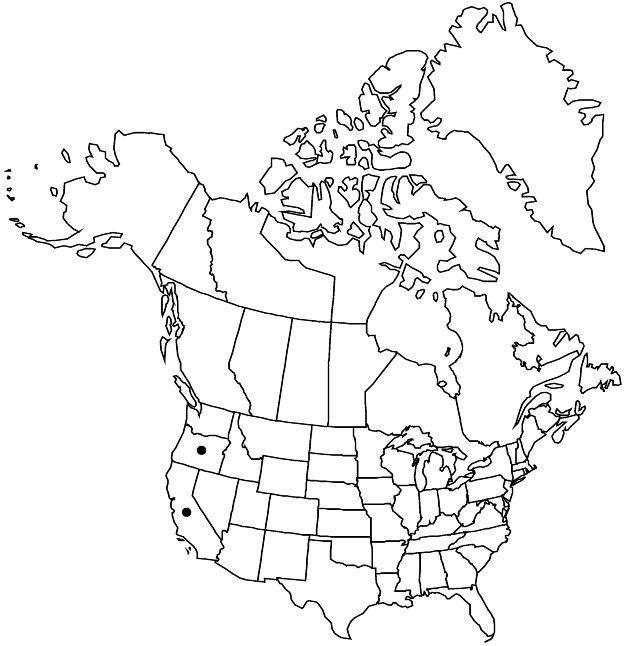Horkelia tridentata var. tridentata
Stems decumbent to nearly erect, 1–4 (–7) dm. Inflorescences composed of 1+ 5–40-flowered ± capitate glomerules, these sometimes expanding with age. Flowers 4–9 mm diam.; hypanthium 2–3.5 (–5) mm diam., interior glabrous; petals linear to oblanceolate, (1.5–) 2–3.5 (–4.5) × 0.3–1 mm, usually ± equal to or longer than sepals, apex acute to obtuse; filaments 0.5–1 (–2) × 0.1–0.2 mm, anthers 0.2–0.3 (–0.4) mm; styles 1–2 mm. Achenes 1.5–2 mm, lightly rugose. 2n = 28.
Phenology: Flowering spring–summer.
Habitat: Open areas, primarily in sagebrush communities and conifer woodlands, mainly on granitic or volcanic soil
Elevation: 300–2500 m
Discussion
Variety tridentata occurs throughout the Cascade Mountains and Sierra Nevada of California, and barely extends into southern Oregon near Ashland, Josephine County, where the presence of distal cauline glands on some plants indicates possible introgression with Horkelia congesta. A specimen from Glendale, Oregon, (Jones s.n., POM) that was annotated and cited by D. D. Keck (1938) as H. congesta subsp. nemorosa is fully comparable to the Ashland material of var. tridentata; the apparent disjunction in Douglas County needs to be confirmed.
Selected References
None.
Lower Taxa
"thin" is not a number."/2lengthofsepals" is not declared as a valid unit of measurement for this property."dm" is not declared as a valid unit of measurement for this property."dm" is not declared as a valid unit of measurement for this property."dm" is not declared as a valid unit of measurement for this property.
